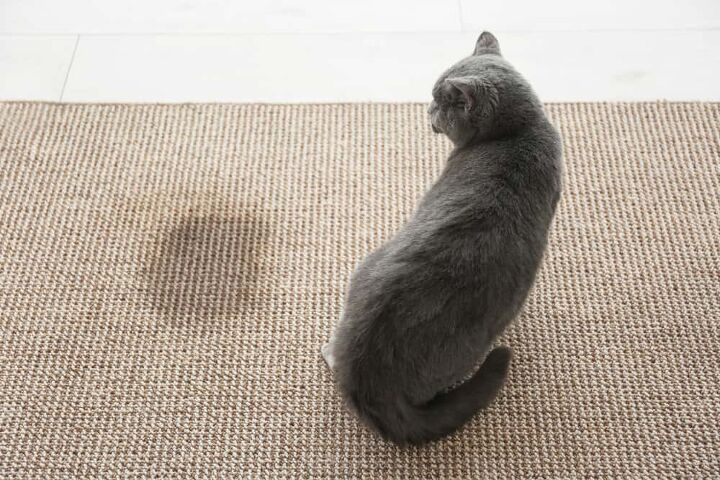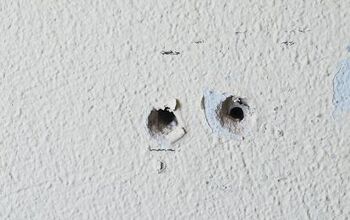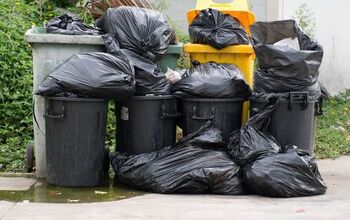How Much Can A Landlord Charge For Damages?

The rights between landlords and tenants with regards to rental properties has been constantly evolving over time. The changing attitudes towards tenant and landlord responsibility make determining who pays for what particularly challenging.
In the simplest terms, any damage that is expected through the course of the average person, people, or family living in a rental unit is considered wear and tear. Conversely, damage that was caused intentionally by a tenant is considered the tenant’s responsibility.
What is Normal Wear and Tear?
When a renter moves out of a rental property, the home will need to be cleaned and restored in such a way that it can be listed to rent again. Deciding who is responsible to cover the cleaning and repair costs often comes down to the type of repairs and damage that exists.
It’s the landlord’s responsibility to cover normal wear and tear, and the tenant’s responsibility if it falls outside of that. Damage that goes beyond what typical wear and tear is can come out of the security deposit, or be charged directly to the tenant, depending on the amount.
Landlords often grapple with definitions of wear and tear because damage comes in many forms and at varying degrees. According to most state laws, the landlord should foot the bill if the property has experienced “ordinary” or “reasonable” wear and tear.
What is considered ordinary and reasonable boils down to the following: wear and tear needs to be caused by using the rental property as it was meant to be used, and it cannot have been directly resulting from any sort of negligence, abuse, or fault the tenant or their guests caused.
Damage Versus Reasonable Wear and Tear
Ordinary wear and tear are not the fault of the tenant, and damage can be directly attributed to an action or inaction of the tenant or their guests. Landlords need to fix the expected wear and tear of a property and they can charge tenants for the damage they’ve caused.
This makes it sound very black-and-white, but in practice, it’s much harder to make the distinction. Let’s look at some examples to get a feel for the difference.
Walls
When inspecting your walls, any small holes from nails or thumbtacks would be considered reasonable wear and tear. Big holes from drilling, large nails, or a multitude of nail holes that need repair would be considered damage.
Any chips in the wall, spots, dents (for example, from a doorknob that hits the wall), or cracks from settling are considered normal and not damage.
Paint
Any paint that fades from sunlight or age, paint that’s cracked, or scraped as a result of using it daily, is ordinary wear and tear.
Damage to paint from water (for example, from plants hanging on a wall), or furniture rubbing, or a paint job that was not approved by the landlord or appears unprofessional is damage.
Counter Tops
If there are light stains, scratches, or watermarks, that is considered normal wear and tear. If you see burns, knife cuts, or big chips, you can be charged for damages.
Wallpaper
If the wallpaper has faded, come loose, or is slightly torn, it’s not considered damage. If it’s ripped or colored on, or is new and not approved by the landlord, it is chargeable as damages.
Windows
Windows that have warped or frames that have faded are considered normal wear and tear. Also included are panes that are lightly scratched or worn out parts. Damage is cracked or broken frames or panes that were caused by the tenant or their guests, screens that are bent or ripped, and broken parts.
Flooring (Tile)
Dirt that is in the grout or light scratches are normal wear and tear. Missing, chipped, or broken tiles would be damage to charge for.
Flooring (Carpet)
Carpet that is worn slightly, has furniture indents, or lightly bare due to high traffic is all normal wear and tear. Moderate amounts of dirt or seams that have come unglued or unraveled are also considered normal. Rips, burns, pet damage (scratches or urine), and heavy stains are all damage.
Flooring (Hardwood)
Normal wear and tear includes sunlight fading, darker patches, or scuffs in the varnish. Damage would be deep scratches, water damage, or chipped or missing flooring.
Ending the Debate
There are many more examples, but hopefully, this gives you an idea of where to draw the line between what’s considered damage, and what’s ordinary wear and tear.
It’s worth noting that there are a few states which outline specific principles of wear and tear and damage in their landlord and tenant laws, so it’s always best to check your municipality to see if there are any prior rules laid out.
What Expenses are Related to Wear and Tear?
When a tenancy ends, a landlord will need to perform maintenance and replace any items that are deteriorated. This is an expense that should already be built into the landlord’s finances and does NOT come out of the security deposit left by the tenant.
Routine Maintenance
Landlords can and should inspect rental units and perform routine maintenance.
General Upkeep
Some examples of tasks that fall into this category are looking for leaks, giving the unit fresh paint, ensuring all light bulbs are functional, having the carpets cleaned, testing all smoke detectors, cleaning out the gutters, and replacing the caulk in bathtubs and showers.
Appliances
If the landlord supplies the unit with appliances, they may also need to be replaced when a tenant moves out. If they were damaged by the tenant, then the landlord can charge for them. However, if they are not working or working poorly because of age, they cannot be charged.
Useful Life
The expected lifespan of common household features, fixtures, and appliances is referred to as the useful life of a piece of furniture, and it varies from piece to piece depending on the quality of the materials used, weather, installation, usage, and maintenance.
For example, Hardwood floors have a useful life of approximately 25 years, whereas enamel paint is only 5 years. Landlords are able to use the concept of useful life when charging a tenant for an item that is broken when they move out.
If a sofa has a 10-year useful life, and the tenant broke it when it was 5 years old, the landlord can charge the tenant half of the purchase price. This assumes that the sofa has experienced half of the useful life but would have lasted another 5 years had the damage not occurred.
In order to identify damage that occurred while the specific tenant was in the unit, walking through and inspecting the unit is generally a good idea. The walkthrough should be done prior to a tenant moving in, and once a tenant moves out.
Performing a Walk-Through
Making sure to perform a walk-through inspection before a tenant occupies the rental establishes a baseline to work from. Taking pictures or videos is also a good idea at this stage, as well as having a standard list of everything that needs inspection.
This can include appliances, paint, walls, finishes, and furniture. Being able to go through this list with the future tenant, where both can agree on the original condition of all items, is considered the gold standard.
When the tenant is moving out, you can do this checklist again together to find any damage and discover whether it existed prior to the tenant moving in or not. This helps to avoid any disputes and ensures there are no surprises for either party.
Related Questions
Can a landlord charge more than the security deposit?
Yes, a landlord can charge you more than what is covered in a security deposit. This will happen when the amount needed to cover the cost of damages exceeds what the tenant left as a security deposit on the rental.Usually, a bill with an itemized list of damages and the cost of replacing or repairing them will be sent to the former tenant, with an expected time frame for payment.
Is a landlord able to sue for property damages?
Yes, a landlord can sue for damages to the property or rental unit in cases where the amount needed to cover the cost of damages is higher than the amount left by the renter as a security deposit.The limit for the amount that can be sued for in small claims court varies state by state, so it’s best to check your local laws. It’s also worth considering whether the amount is worth the effort and whether you’ll be able to collect if you win or not.

Benjamin is a proud homeowner who loves to write about DIY projects and home improvement projects. Traveling, perfecting his home, and spending time with his family are just a few of the many things that keep him inspired.
More by Benjamin Wright



























